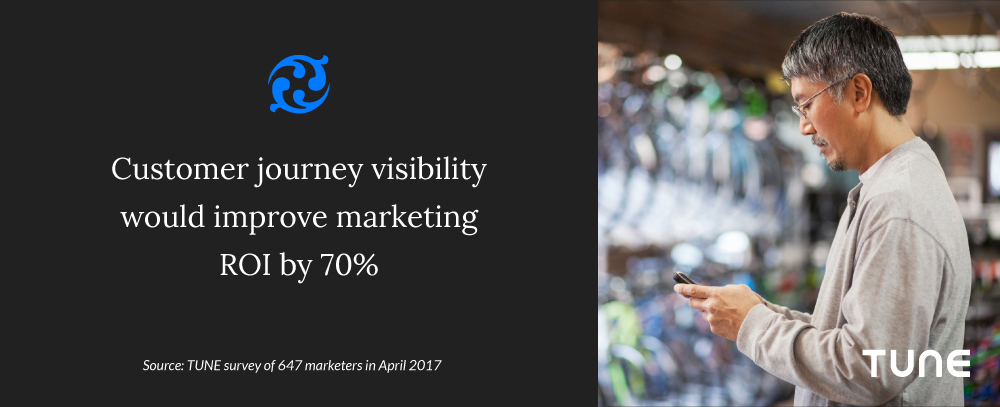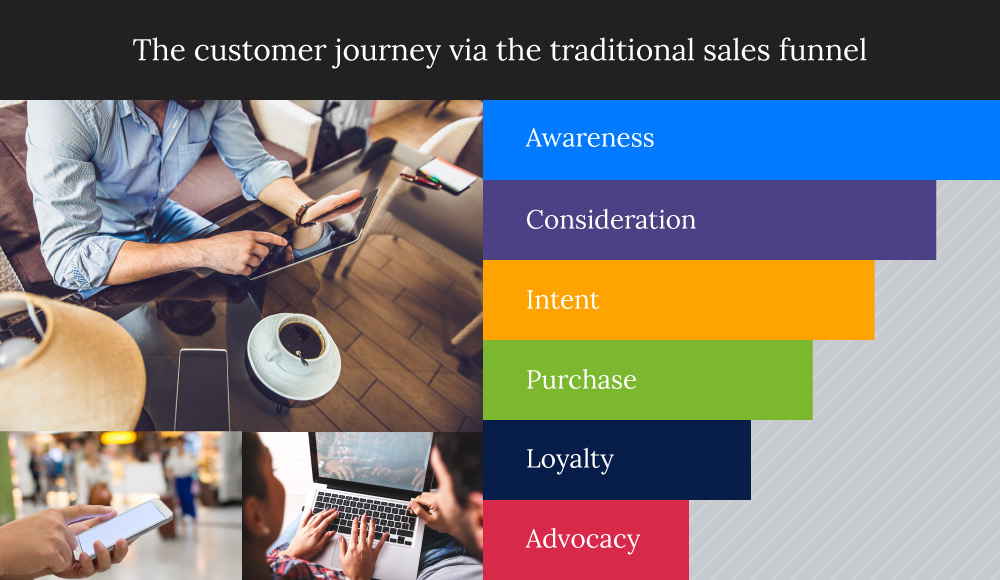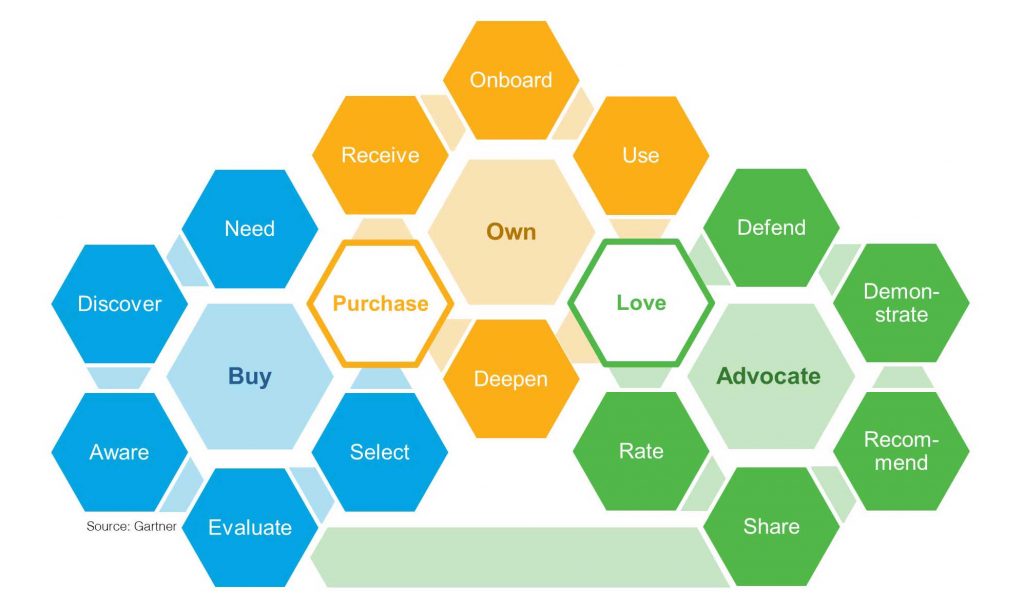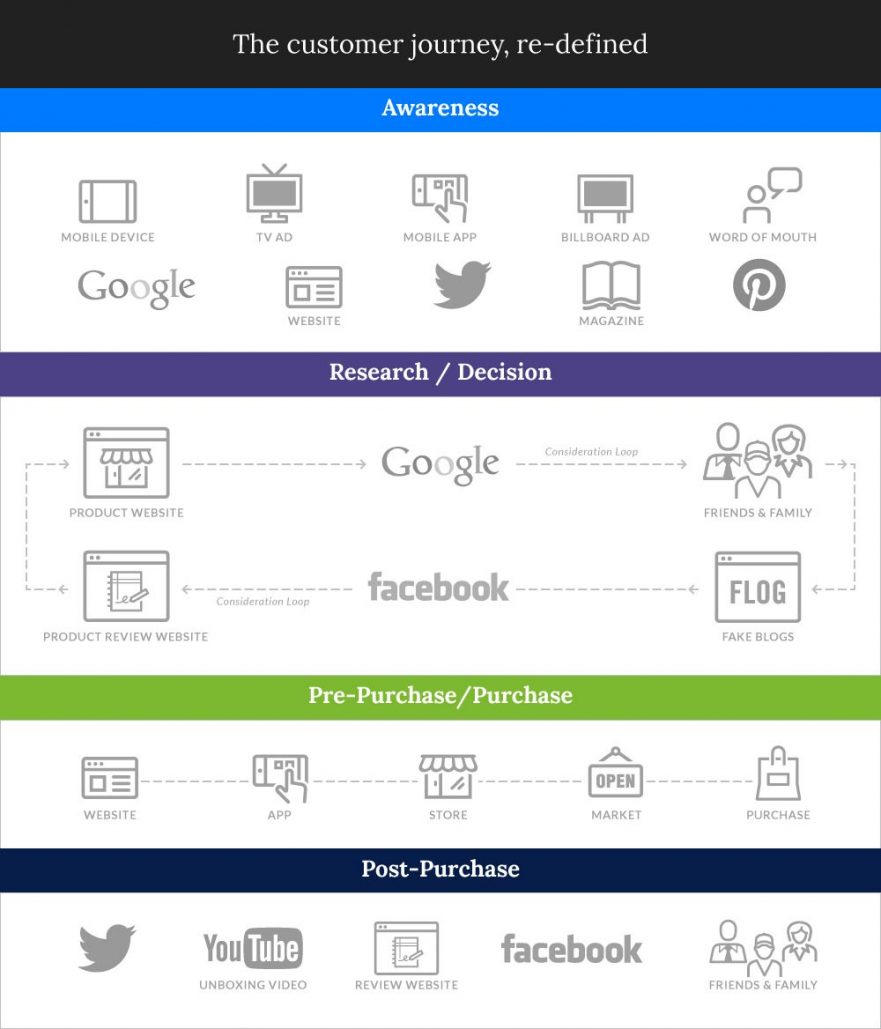
Customer journey mapping teaches marketers how people interact with their brand and engage with their company. But how has mobile changed journey mapping? And how are new technologies like AI assistants, augmented reality, and smart cars changing marketing, and changing journey mapping?
This is part one of a five-part series on customer journeys in a #MobileBest world
Read part two, part three, or part four
Get the entire free report now
We surveyed 647 marketers about the value, technology, and problems with customer journeys. We also asked marketing influencers — including media, analysts, CMOs, and journalists — how customer journeys work, what’s wrong with them, and if marketers should even bother.
What did we learn? Here are just three things of many:
- Improving customer journey visibility could boost marketing ROI by 70%
- The customer journey is increasingly challenging to map … and perhaps impossible, according to many marketers
- Most marketers — a staggering 86% — cannot reliably measure customers’ cross-device activity
If marketers can see and measure how customers become customers, they can optimize the journey. They can see where people go off course. Over time, marketers can also see predictors for success, and commonalities among prospects who end up buying.
And, of course, they can inject advertising and marketing to influence prospects, and learn over time what hits and what misses.
Achieving 70% better marketing ROI
Achieving marketing return on investment is clearly critical.
Average marketing ROI, however, can be fairly poor — as low as 9%, according to a Nielsen study. That’s not terribly impressive: each dollar of marketing activity is only driving $1.09 of profit. To achieve better profit numbers, a good ratio of marketing expenses to revenue generated would be five to one, with every $1 spent in marketing returning $5 in revenue.
So we asked 647 marketers a simple question:
If you had significant real-time visibility into your customers’ journeys, how much would it improve your marketing ROI?

The answer is significant: 70%.
An extra 70% of marketing ROI would drive average profit per dollar of marketing spend from $1.09 to $1.85 — much more attractive. And if a marketers could drive 70% better revenue numbers, a baseline 1:5 ratio of marketing to revenue would jump to $8.50 of revenue for every $1 of marketing expense.
That’s clearly much more attractive, and it says everything we need to know about how important marketers think it is to see and understand the customer journey.
From funnel to journey to … brain?
While there’s clearly value in seeing, understanding, and measuring the customer journey, achieving that goal is far from easy for most marketers.
Marketers have long understood the movement from prospect to customer fairly simplistically: with a funnel.

Gartner recently re-envisioned the funnel from awareness to purchase to advocacy as a customer journey, which is a better depiction of the stages marketers would like customers to progress through — and the actions marketers would like customers to take. This depiction highlights customer activities in and around three areas: buying, owning, and advocating.

There’s still a challenge, however. And that challenge is reality, in all its complexity.
Rather than a funnel, where all are pushed through a narrow hole, the metaphor now is a brain. Every person has many connections …
Warren Whitlock, top 10 social media influencer
The 1,000 step customer journey
The modern digital ecosystem is complex. Very complex. In fact, I talked to a consultant who mapped out 800 points on a massive customer journey map for one client.
The funnel model is simple because it has a single direction of flow: down. The journey model is more complex with multiple steps and stages, and no inherently-binding directionality. There’s a beginning and an end, of course, but many routes between them.
Marketers want customers to progress through the journey. And there is progression, many times. But just as often — or maybe more often — there’s regression. Or looping. Or a stall. Or, in a move that delights but also confuses marketers, people jump right from awareness to purchase in just one or two steps.

At the kind of scale where marketers are mapping 800 different waypoints, it’s no longer simple. Measuring and impacting the journey customers make when becoming aware of, purchasing, and recommending their products is challenging at best, impossible at worst. And attempts to do so can meet with complexity, confusion, and failure.
But completion is not necessarily the goal.
Mapping 800 things that might happen to influence a customer may not be necessary. In fact, there’s value even in incomplete data, according to VentureBeat marketing technology analyst Stewart Rogers:
There is certainly value in mapping the journey, but many challenges exist, and new ones are appearing … These problems are solvable, but they certainly make mapping the journey more difficult than ever before. That being said, even if the data we get from journey mapping isn’t 100% accurate, it is better than having no data at all.
Stewart Rogers, Director of Marketing Technology, VentureBeat
TL;DR?
The challenges increase with technology, but technology also simplifies the complexity.
This has been part one of a five-part series on customer journeys in a #MobileBest world
Get the entire free report now
The topic next time in part two?
Doubling customer journey visibility … how smart marketers see more.
Author
Before acting as a mobile economist for TUNE, John built the VB Insight research team at VentureBeat and managed teams creating software for partners like Intel and Disney. In addition, he led technical teams, built social sites and mobile apps, and consulted on mobile, social, and IoT. In 2014, he was named to Folio's top 100 of the media industry's "most innovative entrepreneurs and market shaker-uppers." John lives in British Columbia, Canada with his family, where he coaches baseball and hockey, though not at the same time.




Super useful report! I’m working on mapping our customer journey to Loyalty and this is going to be an excellent resource :).
thanks!
hi,
this is very nice information for us and this is so useful for us ,
thank for this posting ,
regards,
mansi desai
glad to hear it!